#palaeolithic
Text
Intrigued by the idea of living a longer, happier, and healthier life? The secret may lie in our ancestral past! A fascinating piece by Nicholas Bourne in The Conversation reveals how adopting aspects of a hunter-gatherer lifestyle could drastically improve our health.
154 notes
·
View notes
Photo

#periodic table of elements#palaeolithic#chemisty#elements#physics#prehistory#wrong hands#john atkinson#webcomic#science#stone age
571 notes
·
View notes
Text
After some (very justified) criticism to my definition of prehistoric (see tags) here’s another poll:
#ain’t no one got time for the sub classification of the modern period. I’m sorry guys#I’m also not dividing the Palaeolithic or the Iron Age sooo#archaeology#archeology#poll#polls#polling#Palaeolithic#stone age#paleolithic#Mesolithic#Neolithic#Bronze Age#chalcolithic#iron age#viking age#migration period#medieval period#middle ages#modern period#own post#prehistory: before written record. my geographical framework: southern Scandinavia. south Scandinavian prehistory: up to viking age
101 notes
·
View notes
Text
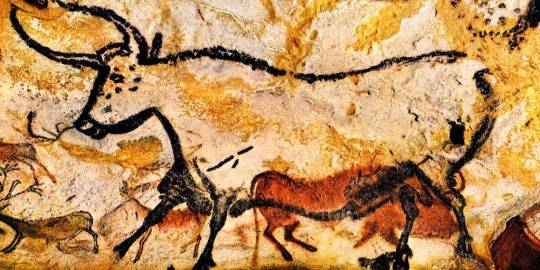

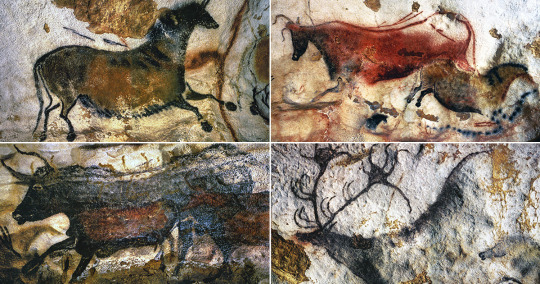
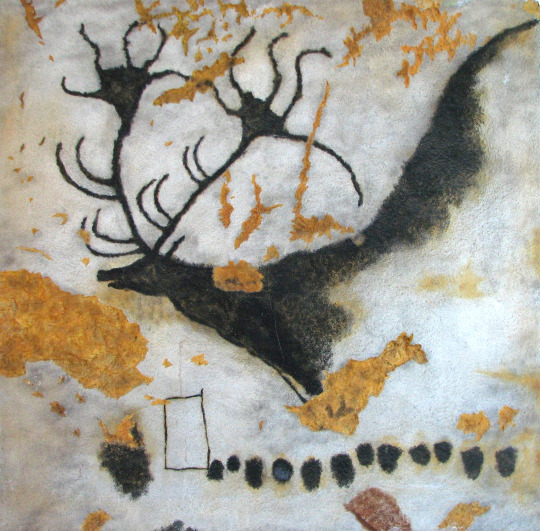
The Cave Art Paintings of the Lascaux Cave
Lascaux is famous for its Palaeolithic cave paintings, found in a complex of caves in the Dordogne region of southwestern France, because of their exceptional quality, size, sophistication and antiquity. Estimated to be up to 20,000 years old, the paintings consist primarily of large animals, once native to the region.
42 notes
·
View notes
Text
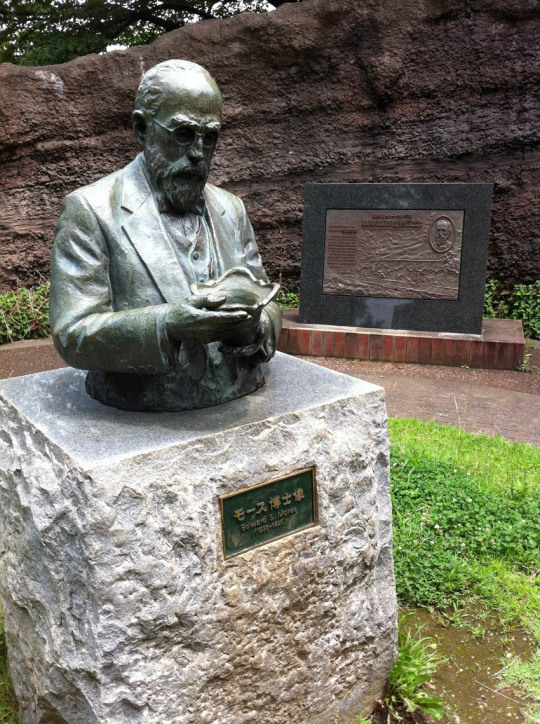


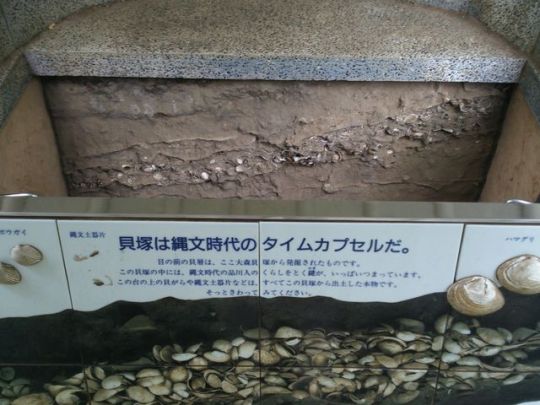
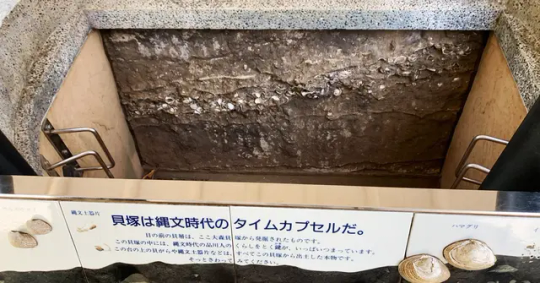
Sean bienvenidos japonistasarqueológicos, a una nueva entrega de arqueología japonesa, una vez dicho esto pónganse cómodos que empezamos.
-
En esta ocasión os voy a presentar al padre de la arqueología moderna japonesa Edward.S.Morse, zoólogo estadounidense del siglo XIX y gran apasionado por el mundo japonés, su hallazgo más relevante fue el montículo de conchas de Omori, cuando lo divisó desde el tren ha raíz de dicho hallazgo, fue venado descubrió la cultura prehistoria Jomon.
-
En la foto se puede apreciar el Montículo de conchas Omori en el momento de la excavación de Morse, en el año 1878 aproximadamente. ¿Lo conocían?
-
Espero que os haya gustado y nos vemos en próximas publicaciones, que pasen una buena semana.
-
日本の考古学者たちよ、ようこそ。そう言われたら、くつろいで、さっそく始めましょう。
-
今回は、近代日本考古学の父、エドワード・S・モース(19世紀アメリカの動物学者で、日本の世界をこよなく愛した人物)を紹介します。彼の最も重要な発見は、大森貝塚で、汽車から貝塚を発見したとき、先史時代の縄文文化を発見したのです。
-
写真は、1878年頃、モースが発掘した当時の大森貝塚です。 ご存知でしたか?
-
気に入っていただけたでしょうか、また今後の記事でお会いしましょう、良い一週間をお過ごしください。
-
Welcome, Japanese archaeologists, to a new installment of Japanese archaeology, and once that's been said, make yourselves comfortable and let's get started.
-
On this occasion I am going to introduce you to the father of modern Japanese archaeology Edward.S.Morse, 19th century American zoologist and great enthusiast for the Japanese world, his most relevant find was the Omori shell mound, when he spotted it from the train, he discovered the prehistoric Jomon culture.
-
The photo shows the Omori shell mound at the time of Morse's excavation in about 1878. Did you know it?
-
I hope you liked it and see you in future posts, have a nice week.
#日本#先史時代#旧石器時代#上毛時代#考古学#ユネスコ#遺跡#横浜#新橋#エドワードシルベスターモース#大森貝塚#日本史#-#japan#prehistory#palaeolithic#Jomoperiod#archaeology#unesco#archaeologicalsite#Yokohama#Shimbashi#EdwardSylvesterMorse#Omorishellmound#Japanesehistory
8 notes
·
View notes
Photo
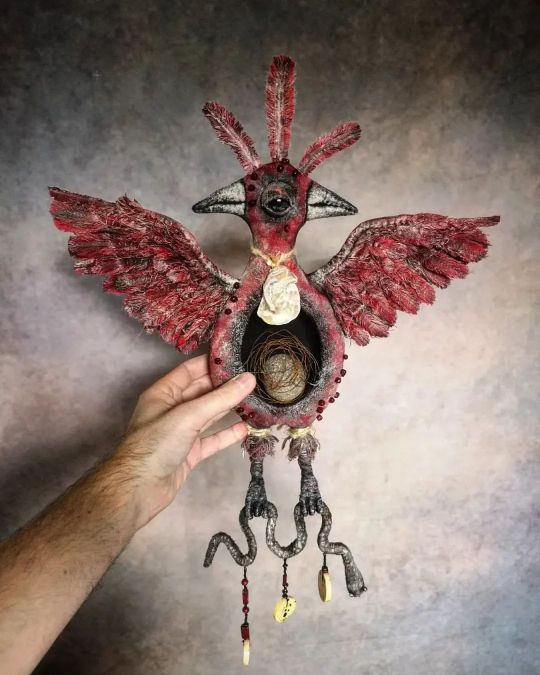
Inspired by Palaeolithic goddess symbolism. The womb, the earth, the nest, the bird, the egg, the snake, the cave. ••• One of a kind art doll with dual bird face and single black glass eye, individually made feathers, reclaimed bead detailing with snake and central womb cavity containing a stone and rusted wire symbolising the great womb or nest of the earth mother. #xphaiea #artdoll #handmade #artdolls #palaeolithic #goddess #goddessculture #matrilineal #mothergoddess #pagansofinstagram #goddessworship #witchcraft #redgoddess #earthmother #witchart #pagan #bird #assemblage https://www.instagram.com/p/CpDKDb6tzFE/?igshid=NGJjMDIxMWI=
#xphaiea#artdoll#handmade#artdolls#palaeolithic#goddess#goddessculture#matrilineal#mothergoddess#pagansofinstagram#goddessworship#witchcraft#redgoddess#earthmother#witchart#pagan#bird#assemblage
69 notes
·
View notes
Note
Favorite historical time period(s)?
I've got a few favourites.
My current is the early Upper Palaeolithic in Europe. I've mentioned the time abyss factor in my most recent post, but there's more.
I've been a fantasy fan for a long time. As you may know, there's a fantasy trope, used by both Tolkien and (Robert E.) Howard, where the fantasy setting is ostensibly the earth in the prehistoric past. Then I get The Handbook of British Archaeology as a 16th birthday present and I discover that trope happened in real life.
Europe had a climate and ecology like that of Mongolia, the landscape was dominated by reindeer, mammoths and wild horses, there were "monsters" (mammoths, cave lions, scimitar cats, etc.), "fantasy races" (Neanderthals and humans coexisted and interbred for several thousand years) and "wandering monster fighters" (everyone).
The Middle Palaeolithic was my first love after discovering that Neanderthals were far more developed than pop culture would tell you they are (they had javelins, string, glue, jewellery, music, etc.), but I'm falling in love with the Upper Palaeolithic for having cool stuff like cave paintings, the Vogelherd Cave figurines (if you haven't heard of them, look them up) and the first definitive evidence of religion. I'm picking the early Upper Palaeolithic because it's where the two meet.
As for Europe, well, it's the one I know most about, and since I live there (Britain, specifically), as do all the ancestors I know of, I feel naturally close to it.
9 notes
·
View notes
Text
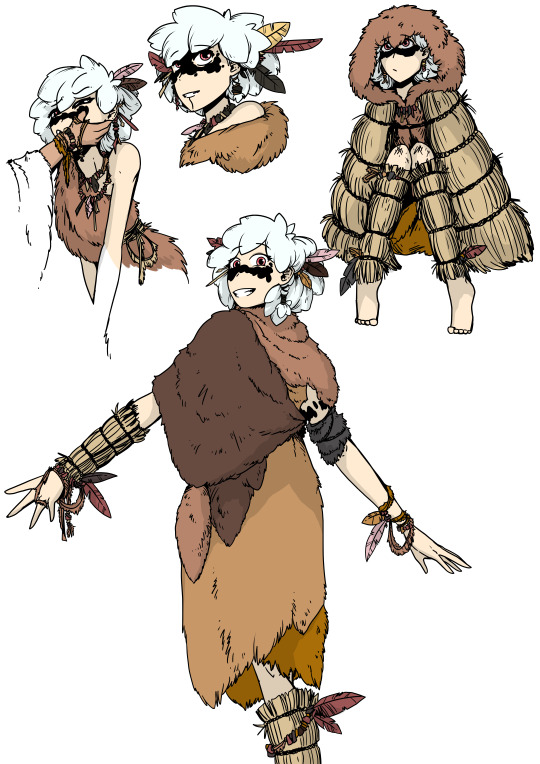
Uhhhhhhh Hi there I have heard tumblr is filled with very nice wonderful people who might like my stuff. I'm writing a comic about an Immortal and the various cultures they live through and documenting it on YouTube and thought this would be a cool place to make more varied and relaxed posts :)
#history#creative writing#writing#writers#comics#my comic#comic art#my art#art dump#sketches#doodle#my art hehe#neanderthal#palaeolithic#Immortal
14 notes
·
View notes
Text
Eye to Eye with the Neanderthal
At least in older pop culture, Neanderthals are often displayed as these brutish little creatures with their clubs and leopard skin. Now, I would like to believe that this is not the view held by modern scientist. Nonetheless, it is a seldom event that we feel like we understand our ancestors on an emotional level. Let me tell you a story of how I deeply related to a person lost to deep time.
Let's set the scene: Picture a house in the Levant, with a nice big olive tree in the courtyard. It's a research station for archaeologists. During our stay I developed a passion for knapping flint in that courtyard. Knapping is the practice of forming stone by hitting it with with another smaller stone. As a beginner, I first learned doing handaxes.
One evening, as I was finishing the best piece as of yet, I managed to break of the point. I was naturally rather upset and wishing for a undo button until I formed another, albeit duller point. I had just finished when one of my lecturers passed me. I showed my masterpiece to him. He took it from me, turned it around several times and then laughed. He has this special laugh he only uses when he has figured out something.
To my astonishment, he walked away (with the handax) and went to check on the artefacts we had collected to far. Curious, I follow him. When I am next to him, he shows me two handaxes. One I have just produced, the other he has taken from the bag. They are almost the same shape. Now I laugh as well.
A person some 100k years ago must have made the same experience like I had. They must have felt the annoyance at breaking a good point and then redone it. Time and nature have formed concretions on it, but the emotion is still there. That day, I related to a Neanderthal, and it is still a strange thought.
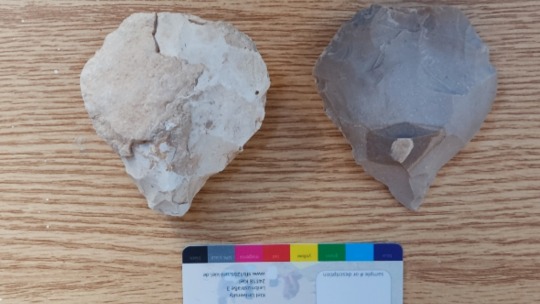
The white one is the artefact, the other is by me.
20 notes
·
View notes
Text
According to consensus, prehistoric men hunted and women gathered. But evidence reveals that gendered labor roles did not exist in the Paleolithic era.
#Neanderthals#women#hunter gatherers#hunting#gender#prehistoric#Palaeolithic#ancient#history#ancient origins
46 notes
·
View notes
Text

"H. sapiens originated in the tropical latitudes of Africa. Given the lack of evidence for tailored clothing prior to about 40,000 years ago, researchers long assumed early modern humans took advantage of periodic warm spells to venture north into Europe.
Yet the finds at Ranis confirm that the cold was no barrier. Within a few millennia or less, small bands of modern humans evidently transitioned from tropical or subtropical forests and grasslands in southwest Asia and the Mediterranean to northern Europe’s treeless, icy steppe."
#science#research#europe#early humans#archaeology#anthropology#palaeolithic#prehistory#early modern human#neanderthals#very exciting
2 notes
·
View notes
Text
Why didn't someone tell me that researching a niche area of archaeology would be difficult... its almost as if there's barely any research on this... who could have known... :'D
#archeology#archaeology#prehistory#prehistoric#research#EPQ#arabian peninsula#palaeolithic#neolithic#ancient history#classics#dark academia#dark acadamia aesthetic#burial practices#mortuary archaeology#burial rites#research project
2 notes
·
View notes
Text
youtube
Paleoanthropologist Ludovic Slimak breaks down Neanderthals in movies
5 notes
·
View notes
Text

Homo Antecessor: the name of this species is highly debated amongst the experts, with many considering the remains to be those of Homo heidelbergensis which has theorised origins which have been pushed back to the same timeframe as this species.
#history#historyfiles#archaeology#homo antecessor#homo heidelbergensis#homo#humans#early humans#prehistory#prehistoric#stone age#palaeolithic#species#evolution
2 notes
·
View notes
Text
"Altered Consciousness" and Cave Art - The Entoptic Phenomena
I've made it through midterms and it's finally anthrop-o'clock!!
I want to start my blog with something I find really...REALLY...fascinating. I was presented this idea in an archaeology class and it's stuck with me since.
OK so let's begin with the fact that cave art is largely a mystery. There've been plenty of theories trying to explain it, but it is prettttty difficult to figure out what was happening in the minds of Palaeolithic peoples. If only there was some, chemically constant, comparative explanation we can study in the minds of people today....OH WAIT!!
The human nervous system, when hallucinating, creates uniform geometric shapes (uniform meaning that if we both hallucinated, our shared brain chemistry/biology would make us see the same types of shapes). This is the Entoptic Phenomena, and some of the shapes ("Entoptic forms") created by the human mind have been found within cave art.
This leads into the discussion of shamans, who are credited with creating this entoptic cave art. Shamans deal with rituals, which has led some anthropologists to believe that cave art was part of rituals in which people would induce a trance-like state and paint the forms they were seeing.
Here's some of the entoptic forms compared to cave art!
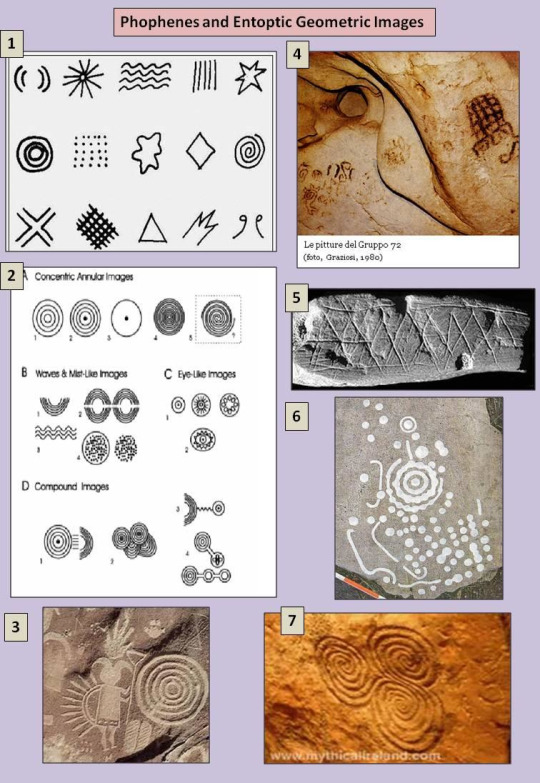
Photo Source: Sayin, H.U. (2014). Does the nervous system have an intrinsic archaic language? Entoptic images and phosphenes. Neuroquantology, 12, 427-445.
References
Art, Shamanism, and Entoptic Images. Altered states the origin of art in entoptic phenomena. (n.d.). Retrieved November 1, 2022, from https://www.faculty.umb.edu/gary_zabel/Courses/Phil%20281/Philosophy%20of%20Magic/My%20Documents/Cave%20Art%20and%20Trance.htm
Lewis-Williams, J. D., Dowson, T. A., Bahn, P. G., H.-G. Bandi, Bednarik, R. G., Clegg, J., Consens, M., Davis, W., Delluc, B., Delluc, G., Faulstich, P., Halverson, J., Layton, R., Martindale, C., Mirimanov, V., Turner, C. G., Vastokas, J. M., Winkelman, M., & Wylie, A. (1988). The signs of all times: Entoptic phenomena in upper palaeolithic art [and comments and reply]. Current Anthropology, 29(2), 201–245. http://www.jstor.org/stable/2743395
#anthropology#archaeology#neuroscience#psychology#biology#palaeolithic#academia#cave painting#biological anthropology#cool stuff
16 notes
·
View notes